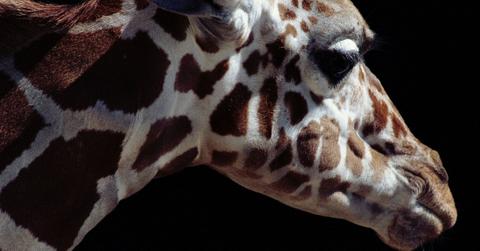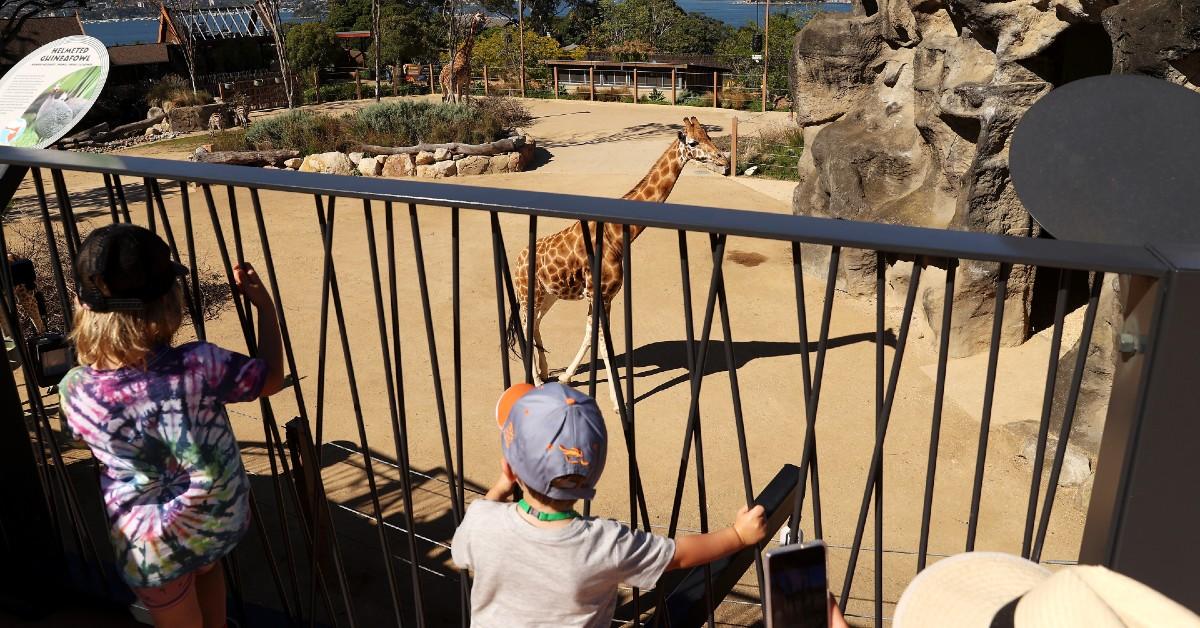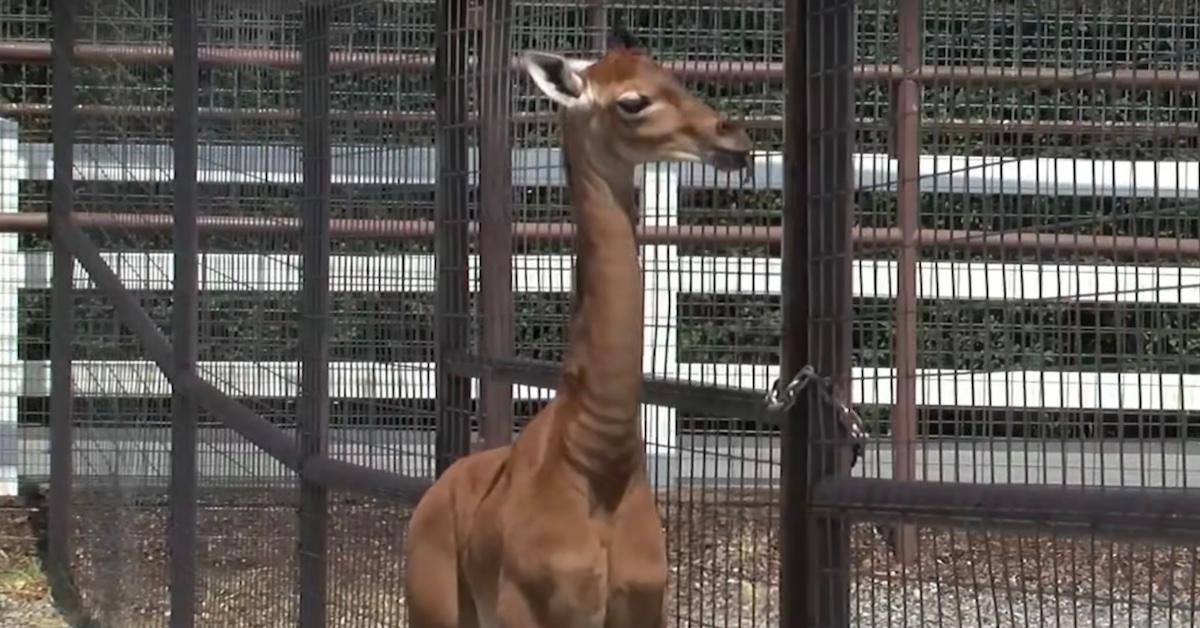Tennessee-Born Giraffe Without Spots Is One of Nature's Cutest Oddities
Published Aug. 25 2023, 8:59 a.m. ET

When you think about the very concept of evolution, it becomes clear that Mother Nature isn't perfect. There's always room for improvement, and she's been known to make "mistakes." From yellow king penguins to striking Chimera cats, the animal kingdom's imperfect inhabitants are often pretty darn cute.
And if you've ever wondered if giraffes can be born without spots, a celebrity of sorts proves that it's possible. The celeb in question is a unique four-legged resident at Brights Zoo in Limestone, Tenn. On July 31, 2023, a reticulated giraffe (an eastern African subspecies) was born entirely spotless. So, how does this happen, and has it happened before? Keep reading to learn all about the adorable freak of nature — as well as some of the issues with keeping animals captive in zoos.
Meet the world's only known living giraffe without spots.
A chestnut brown-hued giraffe born without a single spot, patch, or smudge has stolen our hearts. The USDA-licensed Brights Zoo relayed that “giraffe experts believe she is the only solid-colored reticulated giraffe living anywhere on the planet."
As of this writing, the unnamed miracle creature (you can vote for her name on the zoo's official Facebook page) stands 6 feet tall.
Giraffes' recognizable coats do serve a purpose in the wild, as they act as "anti-predation camouflage," per a 2018 study published in the peer-reviewed Zoological Science journal. Additionally, the Giraffe Conservation Foundation stated that a "sophisticated system of blood vessels" lies beneath each spot.
"A giraffe can send blood through these small branches into the middle of the patch in order to release heat through this system," the conservation nonprofit's website reads.
Fred Bercovitch — a wildlife conservation biologist with the Anne Innis Dagg Foundation — doesn't worry for the Tennessee baby, however. “Among mammals, the fur and the hair are the primary features that assist in thermoregulation, not the color of the fur,” he stated.
Though giraffes' polygonal spots are as functional as they are fashionable, the spotless baby was deemed “healthy and normal” by her veterinary care team, per National Geographic.
The last reported spotless giraffe of this coloring was born at a Japanese zoo five decades ago.
National Geographic wrote that all-white giraffes have been spotted in the wild, but this was due to leucism, which the National Park Service describes as "the partial loss of all types of pigmentation, including carotenoids."
The zoo's director, David Bright, told CBS News via email that the last reported spotless giraffe (Toshiko) was at a Tokyo zoo in 1972.
Considering these uber-rare all-brown giraffes do not possess leucism, what's going on biologically? Sara Ferguson — a wildlife veterinarian and conservation health coordinator with the Giraffe Conservation Foundation — believes the Tennessee giraffe's coloring is related to a mutation in one or more genes, per National Geographic. She added that this particular coloring has never been seen in the wild.
The viral spotless Tennessee giraffe is expanding the giraffe conservation conversation.
“This special giraffe’s birth is remarkable for many reasons, but maybe most importantly, it will help bring attention to the serious challenges the rest of her species face in the wild,” Brights Zoo stated in a press release.
“Wild populations are silently slipping into extinction, with 40 percent of the wild giraffe population lost in just the last 3 decades,” the zoo's founder, Tony Bright, said.
According to the Giraffe Conservation Foundation, the reticulated giraffe is considered endangered and both the Kordofan giraffe and the Nubian giraffe are considered critically endangered.

Zoos present a numer of ethical issues.
All that being said, Brights Zoo itself is perhaps part of a larger problem. Zoos are often credited with their research and conservation efforts, but animal rights organizations continuously attempt to break the facade. PETA's director of international programs, Mimi Bekhechi, even called zoos "prisons for animals."
Their insufficient and unnatural environments and routines often lead to "repetitive pacing, swaying, and bar biting," Bekhechi told National Geographic.
In its list of "negative effects of zoos on animals," the World Animal Foundation mentioned that healthy animals are sometimes killed (especially if they're considered "surplus" animals), there's an increased risk of disease in captivity, animals may be drugged for behavioral issues, and zoo visitors disrespect and upset the animals.
Looking to help wild giraffes? Ditch your weekend zoo plans and donate to charities like the Giraffe Conservation Foundation, the International Anti-Poaching Foundation, and Save Giraffes Now.
